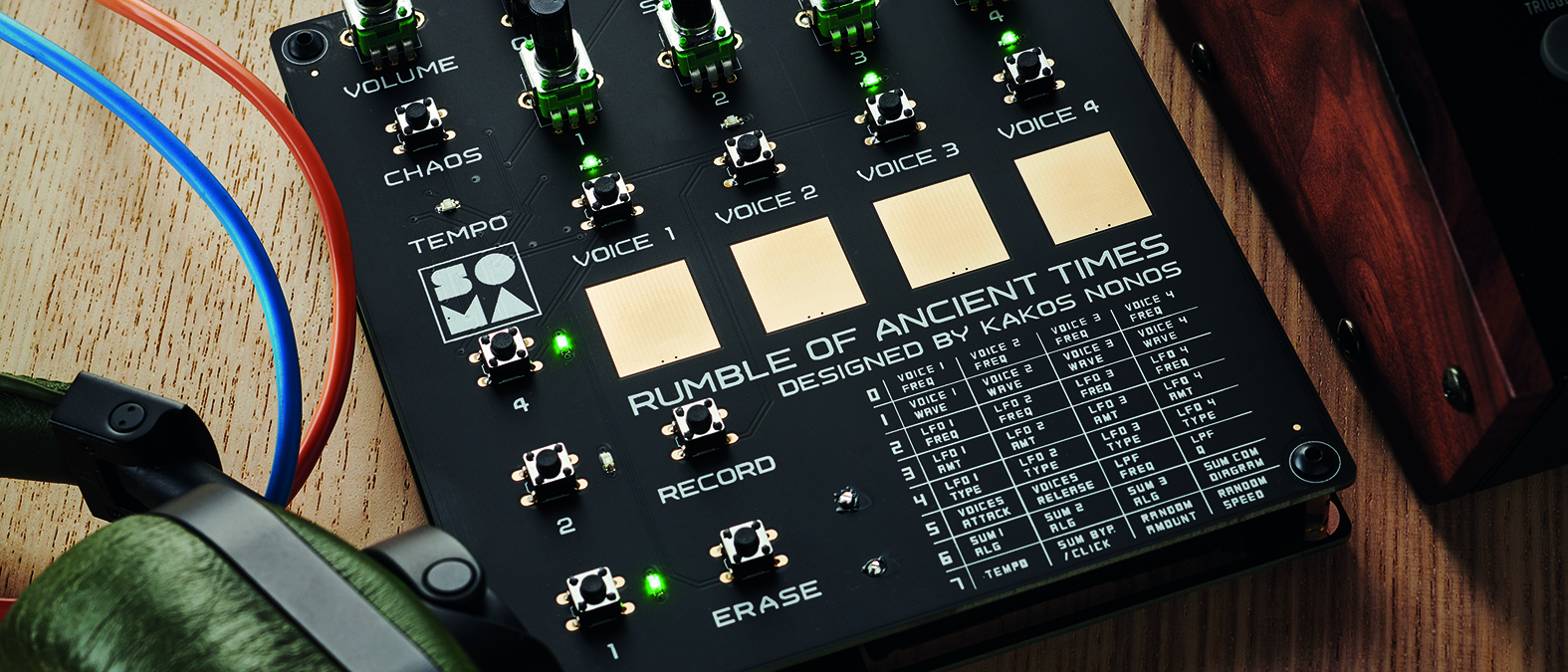MusicRadar Verdict
Limited in tone but excels where it needs to: as a retro-inspired cleverly programmed little synth that’s fun to experiment with.
Pros
- +
Simple interface.
- +
One touch randomisation.
- +
Wonderfully retro in sound.
Cons
- -
No Eurorack compatibility.
- -
Limited sequence length.
- -
Battery power only.
MusicRadar's got your back
Soma Labs Rumble of Ancient Times: What is it?
Gear can be more than just a tool for performing and recording but also a means of exploration. The Roar of Ancient Times, or RoAT, from Soma labs, may not appear too inspirational but spend just a few minutes delving into its lo-fi possibilities and you will soon find there is a lot on offer.
The device itself is fairly diminutive and has a somewhat unfinished look. We imagine some users will while away many an hour devising interesting housings for it, while the rest will be happy to simply play as is.
Don’t be deceived though, RoAT is solidly constructed. Yes, this is a battery-power-only device and it feels to us like a slightly missed opportunity, as a power input, or better yet, a Eurorack modular compatible version would make the RoAT a much more interesting proposition for many. Maybe Soma has a modular version in the works? We hope so.
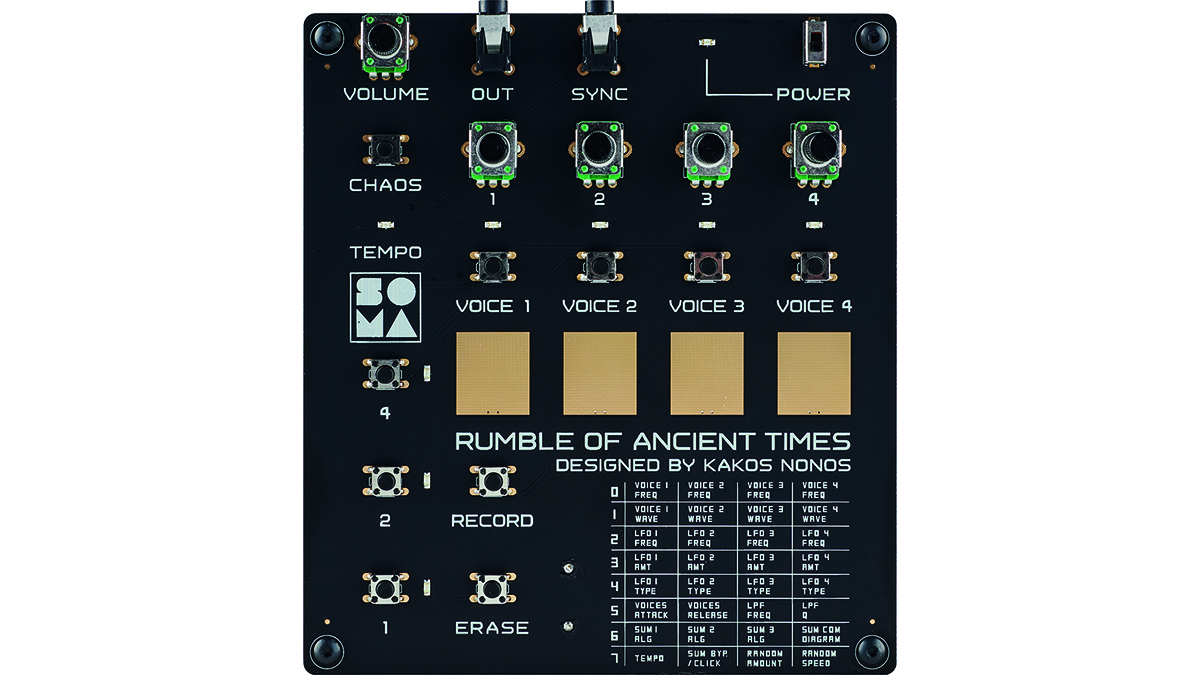
Soma Labs Rumble of Ancient Times: Performance and verdict
But back to the synth itself. It’s a simple affair with volume, output, sync jack and power switch across the top. Although the knobs are small they don’t warrant any lack of confidence in use, feeling robust enough under hand.
The same can be said for the controls found elsewhere, which include rotary controls for adjusting voices and buttons for activating them, or for selecting options from the matrix-based menu.
There are also touch-sensitive pads, one for each voice, used for triggering notes. Labelling is clear and, although small, the matrix is easy to read.
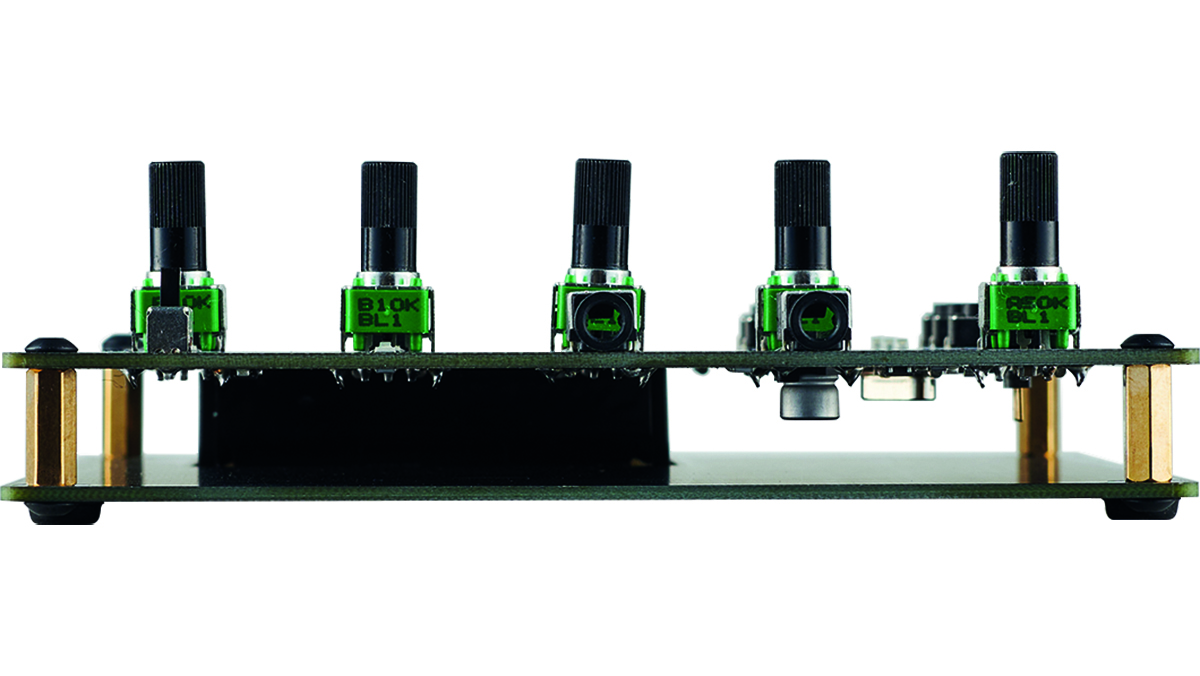
The matrix is where a lot of time is spent, as the seven rows of four-voice frequencies are where you check to modulate your output. Accessing these is done through a combination of buttons, labelled 1, 2 and 4, making for easily adding for any combination up to the seven needed.
Want all the hottest music and gear news, reviews, deals, features and more, direct to your inbox? Sign up here.
This feels odd for the first few minutes then becomes natural and doesn’t need to be thought of again. Essentially you have access to one of four options at a time, controlled by the four potentiometers.
We thought it might lead to headaches and slow navigation but the reality is quite the opposite. No menu diving here, as it is all readable from the front panel, with just a couple of taps needed to get where you need.
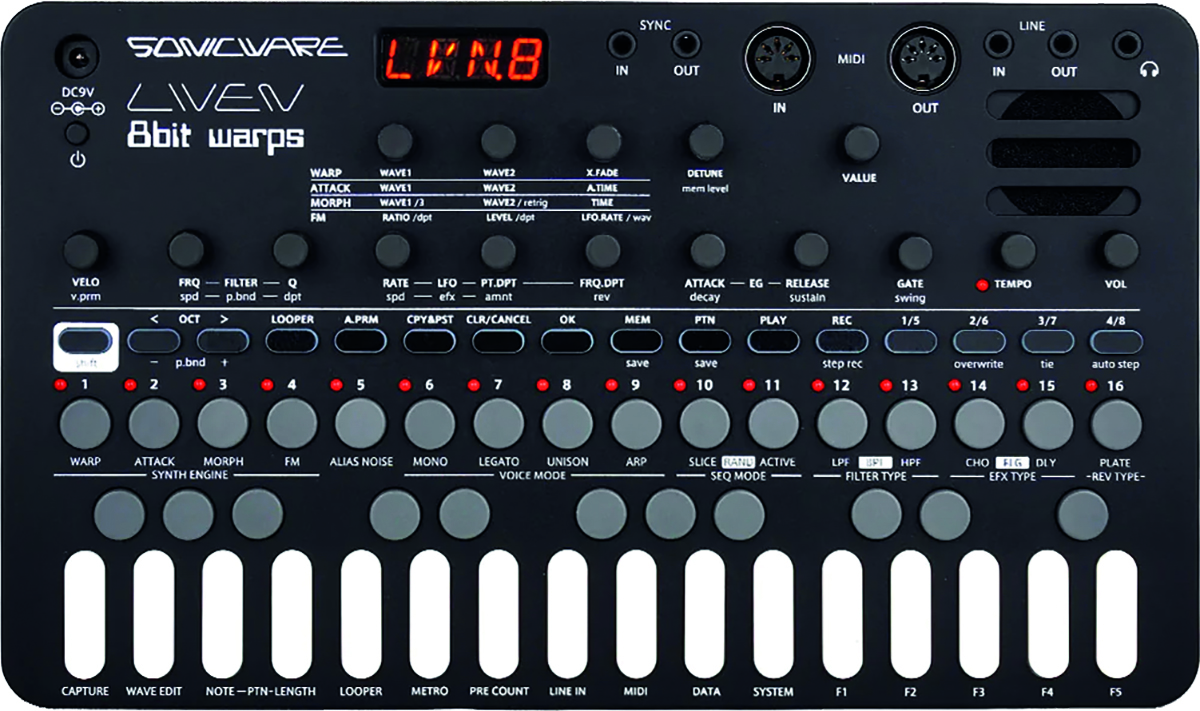
• Sonicware Liven
A more traditional keyboard-based synth with similar 8-bit nature, the Liven is at the less experimental end of things but still worth a look.
• Herbs & Stones Liquid Foam
This wonderful synth is all about experimentation. It sounds glorious in standalone or Eurorack form and will eat away the hours in the best possible way.
• Teenage Engineering OP-1
At the other end of the cost spectrum. Although rather different in form and functionality it has a similarly playful nature and experimental use can conjure some truly magnificent results. Like the RoAT it is properly portable too.
RoAT has four voices with 16 tunable waveforms. Each of these has its own LFO that can be used to modulate tone or pitch.
The way these are controlled is also different from most other devices. Turn the knob counterclockwise to select the frequency range and clockwise to adjust amplitude.
This way of working is typical of RoAT but luckily, as well as the matrix, there is a key to controls on the rear of the device, so finding your way around while getting acclimated isn’t too difficult.
The voices themselves have a somewhat lo-fi sound and this is full of character and charm, which makes sense to us, seeing as it harkens back to the days of 8-bit gaming sounds, and has been based around controller chips from long-defunct home appliances like fridges.
Waveforms range from standard sine, saw and square to random and random cycled, so lots to play with.
The single filter is resonant and similarly retro-sounding but does cover a decent range of tones and, like so much of this synth, oozes character.
We appreciate the thought behind the location of controls for each page too, as they make a lot of sense. For example, dialling in a tone means using row (or page) 5, where the filter cutoff and resonance have been paired with the attack/release controls.
With just four controls available this makes total sense. Thoughtful design can be underappreciated but that usually means it has worked out as planned.

Now, one of the standout features here is the Chaos button. We're very much in favour of these types of features on synths, happy-accident-makers, leading the user into areas of sonic experimentation that they might not have otherwise discovered.
A press of the Chaos button will randomise all settings of the synth, except on the settings page and the currently selected page, giving some level of control over the outcome.
It is so easy to while away time while clicking the Chaos button but beware – if a good randomised setting is found and a further click is made, it is gone forever, as there are no undo options.
Page 7 also offers some randomisation but in a slightly different and more controllable manner. These act like ramps, so the random settings of each control build over time.
This is done by turning the third knob to set the number of registers effected, while the fourth defines the speed. Speaking of which, RoAT can work from an internal clock or be synced with outboard gear, a huge feature when this thing gets into sequencing mode.
A simple press of the record button lays down a loop of one bar, using the trigger pads for each note (so 4/4), with subsequent notes being overlaid. Clearing the pattern is a simple matter of pressing erase.
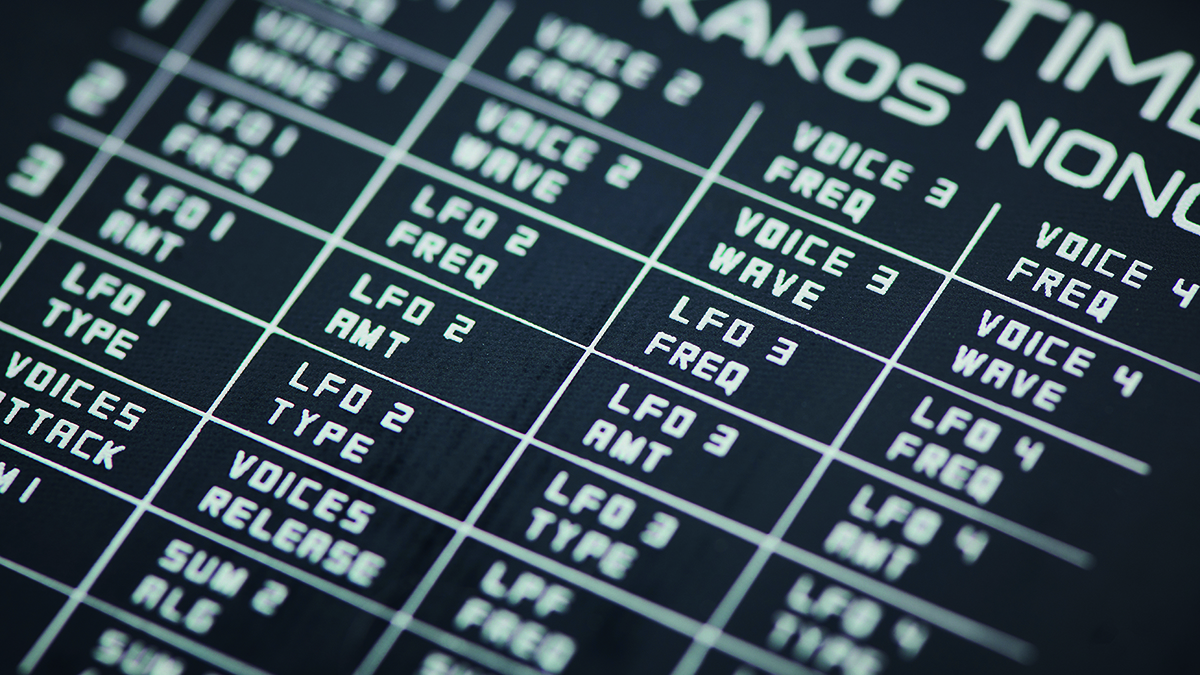
Channel mixing
RoAT creates its output by mixing together the four channels, which it does by way of a variety of algorithms, of which there are eight. The channels are linked at different intersections and it’s the algorithms that set the interplay between the channels.
This sounds complex but in use it is easy to grasp and is where the character of the synth comes through, along with its versatility. It will also sound a bit lo-fi and retro (in a good way) but a pretty wide variety of tones can be mustered from very little input or steep learning. Unlike a DX7 the RoAT is simple to operate and understand.
Verdict
All these features come together to create a wonderfully exciting synth, with a huge range of tones that excel when modulated rhythmically. The algorithms that mix the four voices can generate some truly unique but unquestionably retro sounds, that work really well with other devices and are a joy to play with.
MusicRadar verdict: Limited in tone but excels where it needs to: as a retro-inspired cleverly programmed little synth that’s fun to experiment with.
Soma Labs Rumble of Ancient Times: Hands-on demos
Vlad Kreimer
sonicstate
Juno Studio
Soma Labs Rumble of Ancient Times: Specifications
- I/O: 4 oscillators, 4 LFOs, FM, Ringmod and bitwise modulations, Resonant low pass filter.
- CONTACT: Soma Labs
